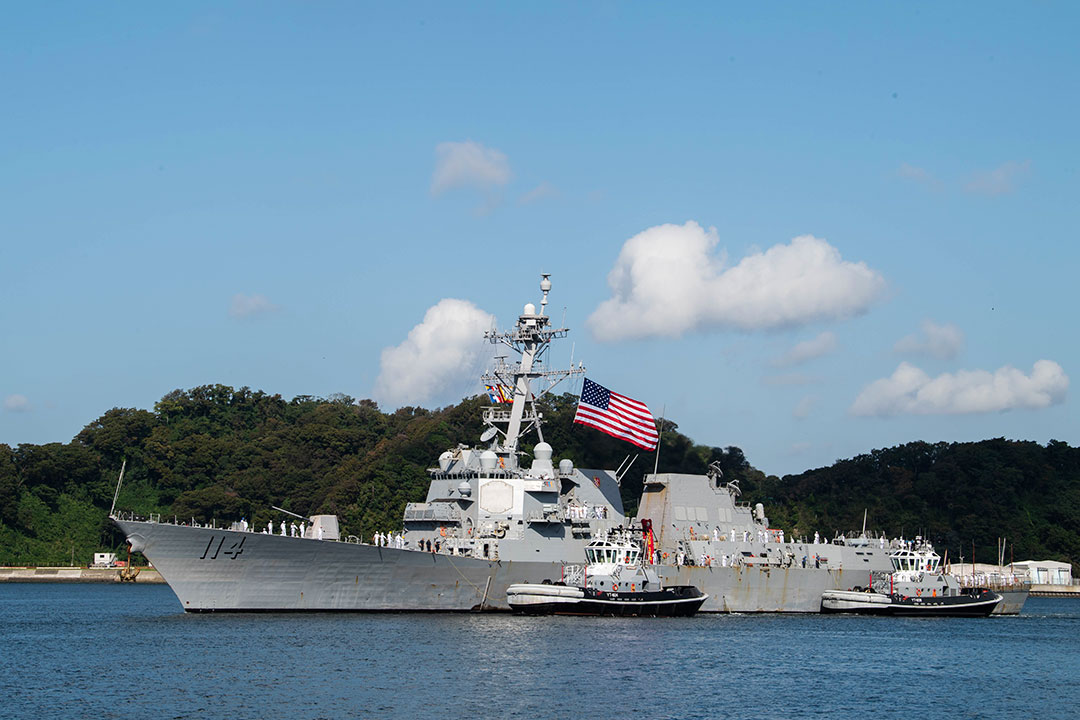By David Hessen
The South China Sea faces rising tensions on multiple fronts, as seasonal monsoons batter its waters while political storms brew above. Beneath the waves lies a contested region where superpower rivalry between the United States and China collides with local disputes over territory and influence. With diplomacy faltering and distrust rising, the risk of miscalculation grows more dangerous by the day, casting a long shadow over one of the world’s most strategic waterways.
Although the United States does not have a direct stake in the territorial disputes of the South China Sea, it is bound to the region in ways that it cannot escape. The Philippines, a U.S. treaty ally, contests parts of the region with China and the two regularly skirmish across air and sea. A hypothetical Chinese invasion of Taiwan would reintroduce armed conflict to the region at a scale not seen in decades and almost certainly draw in the United States. Huge quantities of global commerce pass through the South China Sea, and a Chinese stranglehold over this region would constitute an unacceptable risk to American prosperity.
Despite the mounting challenges, the United States faces a critical opportunity. By reinforcing its web of alliances, expanding joint military exercises, and bolstering security partnerships, Washington can strengthen deterrence against aggression and help stabilize one of the world’s most volatile maritime flashpoints.
Ports in the Storm: Alliances in the Indo-Pacific
The United States has a solid foundation to start with. It has multiple longstanding allies in the region, such as Japan, Australia, and the Philippines. These alliances, originating from the Cold War, remain the basis of Washington’s projection into the western Indo-Pacific. However, on their own they are insufficient in repelling a rapidly strengthening China.
To account for the new challenges posed by Beijing, Washington has begun to form new alliances and security partnerships. Some, like AUKUS with Australia and the United Kingdom, are concentrated around a specific capability necessary for regional deterrence—in this case, producing nuclear submarines. Others, like the Quad (Australia, India, and Japan) and the Squad (Australia, Japan, and the Philippines), are multifaceted, covering regional security, economic development, and specific crises such as pandemic response and critical minerals supply chains. Each remains primarily motivated by shared concerns around China’s military capabilities and threatening rhetoric.
While these arrangements reinforce Washington’s commitment to Indo-Pacific security, there are indications that the United States is second-guessing its strategy. The Trump Administration announced that AUKUS is under review, potentially due to concerns that the U.S. may not be able to produce enough submarines each year to fulfil both its own security needs as well as Australia’s. Although this is a fair concern, the United States must not allow its actions to diminish its credibility to its allies and prospective partners, both in the South China Sea and beyond.
Practice Makes Perfect: Expanding Military Exercises
In addition to its alliances, the United States bolsters its relationships with South China Sea states through a variety of military training programs and exercises. Each year, the United States Armed Forces participates in regional exercises such as Balikatan (the Philippines), Cobra Gold (Thailand), Super Garuda Shield (Indonesia), Exercise Talisman Sabre (Australia), and Exercise Malabar (the Indian Ocean). Many of the aforementioned programs, initially conceived of as bilateral exercises, have since become multilateral, drawing in additional regional and international partners. These training programs and exercises support the proliferation of tactical best practices and reduce distrust through institutional transparency. Washington should continue and expand these exercises, especially with states concerned about China’s expansion in the South China Sea.
Of all the states threatened by Chinese expansionism, none are more threatened than Taiwan. To its credit, Washington understands the need for military engagement with Taipei beyond arms sales and has recently increased its efforts to train Taiwanese forces. Taipei also understands the need to enhance its defense preparedness and recently launched its largest Han Kuang military exercise ever. Yet Taiwan is still kept at arms-length in official multilateral agreements and regional military exercises. Nations friendly to Taiwan, even the United States, resist taking actions that appear to convey recognition of Taiwan as a sovereign state in fear of angering China.
While the United States is working quietly to train Taiwan, permitting Taiwanese forces to directly participate in regional military exercises, even in an observational capacity, would provide tangible benefits. This idea is not new—in 2021, the United States Congress urged Taiwanese participation in the next RIMPAC exercise, yet this suggestion has not been implemented as of the most recent exercise in 2024. If Taiwanese forces were to participate or observe in regional military exercises, this would strengthen best practices and crisis response capabilities with partners like the United States, Japan, and the Philippines in the event of a major regional war.
The threat of conflict hangs increasingly heavy over the South China Sea and the western Indo-Pacific. The United States, through its alliances and multilateral military training regimes, is well-placed to expand on its current deterrence posture. But doing so requires more than symbolic gestures and half-measures. Washington should continue to build on existing foundations with sustained commitment and strategic coordination. Sailing to a safe port in a storm is better done with all parties steering together with purpose and unity in the same wind.
 David Hessen is the Managing Editor of the South China Sea Newswire.
David Hessen is the Managing Editor of the South China Sea Newswire.


